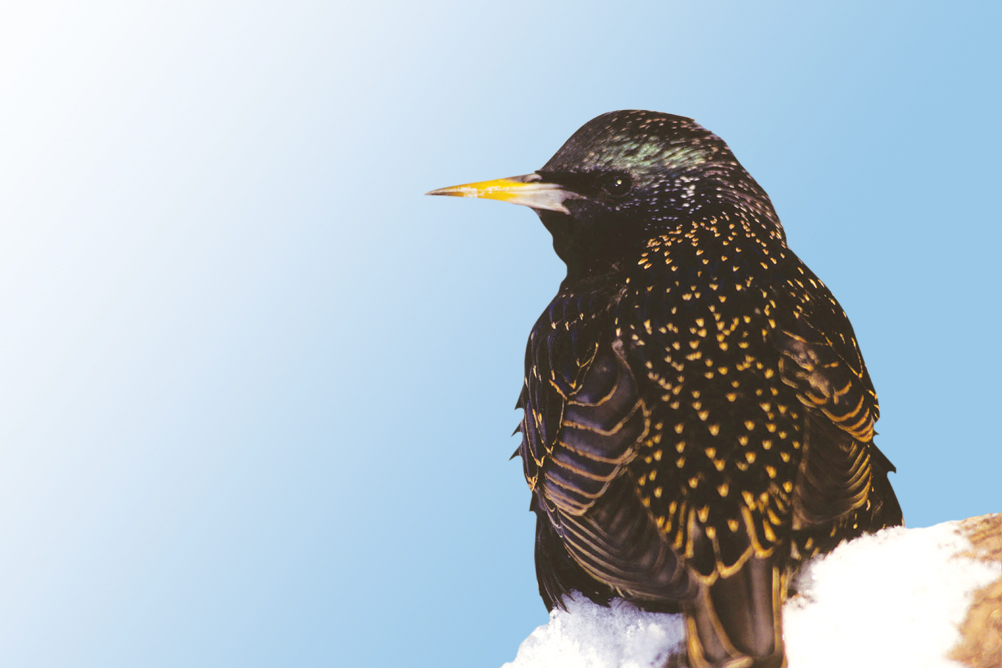These mynah relatives are great mimics, but will evict native species European starlings

By Bettyann Nagy
Ohio certified volunteer naturalist
All the European starlings in North America descended from 100 birds set loose in New York’s Central Park in the early 1890s.
The birds were intentionally released by a group who wanted America to have all the birds that Shakespeare ever mentioned.
Today, more than 200 million European Starlings range from Alaska to Mexico.
They are considered an invasive species, native to Eurasia.
Starlings are chunky birds with short tails and long slender beaks. They are 8.5 inches long, weigh 2.5-3.5 ounces, with a wingspan of 12-15 inches.
In flight their wings are short and pointed, making them look like small, four-pointed stars.
At a distance, starlings look black. In summer they are iridescent purplish-green with yellow beaks. In winter plumage they are brown, covered with brilliant white spots.
Starlings are boisterous, loud and travel in large groups.
They are common in towns, suburbs and the countryside near human settlements.
They feed mostly on the ground and will eat nearly anything, from insects, berries, grains, seeds, nectar and even garbage. They will also come to your feeders and are fond of suet.
Males and females generally look alike.
Males choose the nest site to attract females. They are cavity nesters, using a building crevice or other structures like streetlights.
They will also take over a woodpecker’s hole or a nest box, having a negative impact on our native cavity nesting birds.
They will even expel the occupants when they take over the nest, thus causing these populations to decline.
The male will build a nest of grass, pine needles, feathers and even cloth and string within one to three days.
If the female approves, they will mate and she will lay a clutch of three to six bluish- or greenish-white eggs. Incubation is 12 days, with a nestling period of 21-23 days.
Both parents will feed the nestlings.
Two broods a year is common.
Though they’re mostly considered pests and resented for their noisy flocks and aggressiveness, they are grudgingly admired for their adaptability, toughness and intelligence.
They are relatives of the Mynah bird and are great vocal mimics.
Individuals can learn the calls of up to 20 bird species, a few animal sounds and even mechanical sounds.
Most starlings are yearround residents in North America, but some do migrate south in the fall.
They are strong fliers that can get up to speeds of 48 mph.
Their dazzling migration formations called “murmurations” are nothing short of mesmerizing, and can be seen on YouTube.
Though many attempts have been made to control their population, it is clear that starlings have found a permanent home in North America.
To learn more about starlings and for options to deter them when they are an issue, go to http://go.osu.edu/starling.
 43
43
